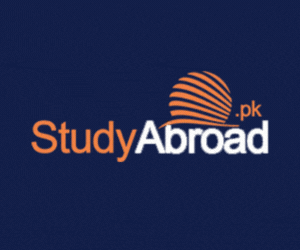-
 Home
Home
-
 News
News
Latest Educational News Stories
Daily update of all national, international news, picture stories, college / university announcements and educational events.
-
 Colleges
Colleges
Pakistan's Largest Database of Colleges and Universities
Explore Largest Directory of Private and Govt. Colleges, Universities and find best institute for your future Education.
-
 Courses
Courses
-
 Admission
Admission
-
 Lectures
Lectures
-
 Online Test
Online Test
Short Question
- 9th Class Physics Short Questions
- 9th Class Chemistry Short Questions
- 9th Class Math Short Questions
- 9th Class Biology Short Questions
- 9th Class Computer Short Questions
- 9th Class English Short Questions
- 10th Class Physics Short Question
- 10th Class Chemistry Short Question
- 10th Class Math Short Question
- 10th Class Biology Short Question
- 10th Class Computer Short Question
- 10th Class English Short Question
-
 Past Papers
Past Papers
-
 Date Sheets
Date Sheets
-
 Results
Results
Exam Results 2024
Check online Results 2024 Matric Inter BA BSc B.Com MA MSc M.Com CSS PCS MCAT ECAT of all educational boards and universities in Pakistan
-
 Study Abroad
Study Abroad
Study Abroad Programs and Opportunities for Pakistani Students
Explore free study abroad search to find programs, consultants, events to study in USA, UK, Australia, China, Malaysia and many others.
-
 Jobs
Jobs
-
 Tutors
Tutors
-
 More
More
-
 Apps
Apps
ICS Part 2 Statistics Online
Chapter 15 Test
Start Chapter
15 Test
ICS Part 2 Statistics Chapter Wise Online
MCQ's Test
MCQ's Test For Chapter 0 "ICS Part 2 Statistics Chapter 15 Online Test"
Try The MCQ's Test For Chapter 0 "ICS Part 2 Statistics Chapter 15 Online Test"
-
Total Questions17
-
Time Allowed20
Question # 1
The shape of the chi-square distribution depends upon_________.
Question # 2
A process of dividing the objects into two mutually exclusive classes of an attribute is called
Question # 3
The process of dividing the objects into two mutually exclusive classes is called_______
Question # 4
Chi-square curve ranges from:
Question # 5
The value of chi-square statistic is always _______.
Question # 6
The degree of relationship between the two attributes is called
Question # 7
The degree of relationship between the two attributes is called_______.
Question # 8
The total area under the curve of chi-square distribution is_______.
Question # 9
If (AB) = (A)(B)/n, the two attributes. A and B are _________.
Question # 10
The sample size n is reasonably large so that for each cell, the estimated expected frequency must be at least
Question # 11
The two attributes A and B are ________associated, If (AB) < (A)(B)/n.
Question # 12
For a 3 x 3 contingency table, the number of cells in the table are _________.
Question # 13
A characteristic which varies in quantity from one individual to another is called a________.
Question # 14
Degree of linear relationship between two variables is called
Question # 15
(α) = (αB) + ------------------
Question # 16
A characteristic which varies in quality from one individual to another is called an_______.
Question # 17


ICS Part 2 Statistics Chapter 15 Online Test MCQ's
Top Scorers Of Chapter 0 "ICS Part 2 Statistics Chapter 15 Online Test" MCQ`s Test
-
D Dua Sohail 20 - Jun - 2024 01 Min 08 Sec 17/17 -
M muhammad ilyas 14 - May - 2024 01 Min 09 Sec 17/17 -
M Muhammad Awais 19 - Apr - 2024 01 Min 11 Sec 17/17 -
S Shabana Naeem 25 - Sep - 2024 01 Min 51 Sec 17/17 -
S Shahzadi Sami 13 - Dec - 2024 02 Min 02 Sec 17/17 -
M Malaika Usman 20 - Jan - 2025 02 Min 10 Sec 17/17 -
M musa khan 11 - Jan - 2025 02 Min 42 Sec 17/17 -
M Maaz Ansari 08 - Sep - 2024 01 Min 13 Sec 16/17 -
A ABBASI BEAST 18 - Apr - 2024 04 Min 35 Sec 16/17 -
A Ali Umar 04 - Oct - 2025 02 Min 16 Sec 15/17 -
R Rameen 20 - May - 2024 02 Min 21 Sec 15/17 -
M M. Naeem 14 - Oct - 2024 02 Min 36 Sec 15/17 -
A Areeha Waheed 10 - Jul - 2024 03 Min 18 Sec 15/17 -
U Umm-e-hani Hani 24 - Dec - 2024 05 Min 30 Sec 14/17 -
A Aimen Zahra 17 - Apr - 2024 02 Min 04 Sec 13/17
ICS Part II Statistics Chapter 0 Important MCQ's
| Sr.# | Question | Answer |
|---|---|---|
| 1 | A characteristic which varies in quality from one individual to another is called an_______. |
A. Variable
B. Attribute
C. Associated
D. Independent
|
| 2 | The two attribute A and B are positively associated, if _________. |
A. (AB) = (A)(B)/n
B. (AB) < (A)(B)/n
C. (AB) ≠ (A)(B)/n
D. (AB) > (A)(B)/n
|
| 3 | When the expected frequencies are very small the value of=χ2has been |
A. adjusted
B. omitted
C. changed
D. all of these
|
| 4 | Degree of linear relationship between two variables is called |
A. regression
B. association
C. correlation
D. disassociation
|
| 5 | C= ------------------------------ | |
| 6 | A characteristic which varies in quantity from one individual to another is called a________. |
A. Association
B. Correlation
C. Variable
D. Attribute
|
| 7 | The degree of relationship between the two attributes is called |
A. regressor
B. correlation
C. regressand
D. association
|
| 8 | If 6Σd2/n(n2 - 1) is zero, the value of rs is ________. |
A. 0.5
B. 1
C. -1
D. 0
|
| 9 | If two attributes A and B are independent, then co-efficient of association is______. |
A. -1
B. +1
C. 0
D. 0.5
|
| 10 | If two attributes A and B have perfect positive association value of the coefficient of association is equal to _______. |
A. +1
B. -1
C. 0
D. (r-1)(c-1)
|








.jpg)













Share your comments & questions here
bilal
13 Apr 2017no comment